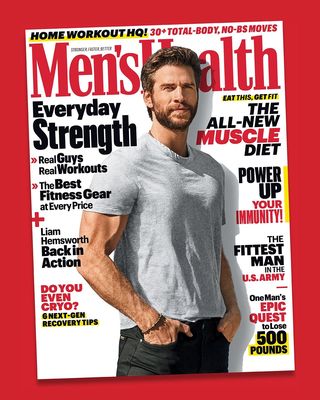3 Ankle Mobility Exercises You Can Do for Better Squats
Dr. Aaron Horschig, DPT, of Squat University, puts an accessible spin on common problems physical therapists see when they work with strength athletes. The good doctor has assisted reigning World’s Strongest Man Martins Licis with some problem areas, so advice from Squat U has been put into practice by the best. Here, Horschig shares the three stretches you can do to maximize your ankle mobility to help achieve optimal technique with lifts like the squat, clean, and snatch.
“Ankle mobility limitations are almost the number one problem that hinders good squat technique,” he says. “If you wan to get into a good deep squat, your knee has to move forward over your toe, and that needs or requires ankle mobility. So if you have limitations, what’s going to happen? Your chest is going to fall forward.”
If you have a heavy load up top, that forward lean is more likely to cause a failed lift in the best case scenario, and injury in the worst. Fix your ankles for more success and safer workouts.
First, Horschig offers instructions for how you can test your current ankle mobility.
“Get next to a wall or the end of a rig and place your foot give inches from it,” he says. “From here, try to drive your knee directly over your second or third toe, without your heel popping off the ground. If your heel pops off the ground of your knee caves in in order to hit the wall, we’ve discovered an ankle mobility limitation.”
He notes that the next step is to determine what’s causing the limitation.
“If you have a pinching sensation in the front of your ankle is significant of a joint restriction. Basically the way the bones in your ankle are moving over each other is not allowing your knee to translate over your toe.”
If this is the cause, he encourages you to do a banded joint mobilization.
1. Banded joint mobilizations
Place a 2.5- to 3-inch band around a rig. Elevated your foot slightly on a weight with the band wrapped around your ankle, resting on the front of your foot (your talus bone).
“What the band is doing is helping improve that natural gliding of the joint,” Horschig says. “We’re helping improve the motion of the talus bone gliding backwards against the tibia bone (your tall shin bone), improving the natural joint movement of the ankle.”
Drive your knee forward over your toe. Do 20 reps, holding for three seconds.
After working on your joint mobility, he offers two other stretches that will now work on stretching the muscles on the backside of your body.
2. The box/bench stretch
Place your foot on a bench, then drive your knee directly over the toe and hold.
“What I like doing is grabbing down on the box and using my chest to really pull down,” Horschig says. “When you’re driving your knee over your toe, we’re getting a lot more stretch in your calves in the soleus muscle than your gastroc (big calf muscle), and that’s often a main limiting muscle in our depth when squatting.”
He suggests tailoring the duration of your stretch, which can mean holding the stretch between 10 seconds and 1 minute.
3. The goblet squat stretch
Horschig uses a 10 kilogram (22 pound) plate for this move, but you can use just about any type of load you can manage. To do this, squat all the way down, holding the plate in front of you.
“In this position, swivel your hips and drive your knee over your toe, feeling a really good stretch in the back of your calf,” he says.
Do 4 to 5 reps, holding for 10 seconds with your weight on each leg.
“You have t have a check and a recheck,” says Dr. Horschig. “Go and check that five inch test and try your deep squat again. Does it feel like you have a little bit better ability to squat deeper, keep your chest more upright?”
If the answer is yes, you’ve done the drills right to get the desired effect. But don’t think you’re done there. Keep up the work to retain that mobility.
Source: Read Full Article
